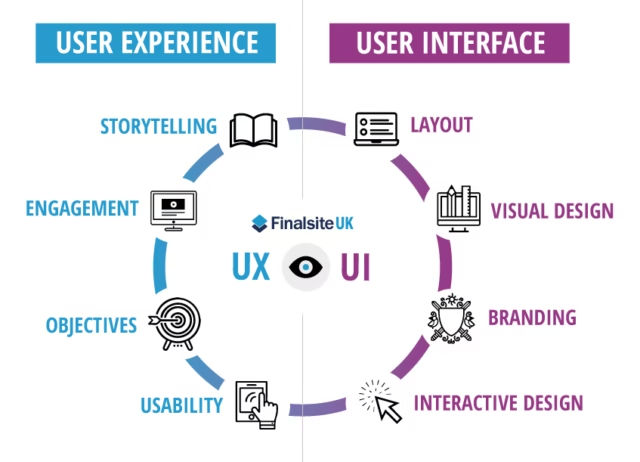Introduction
In today’s digital-first world, every click, swipe, or scroll shapes how users perceive a product or service. This is where User Experience Design comes into play. Whether you’re building a mobile app, website, or digital platform, understanding UX is critical to ensuring that people not only use your product but enjoy using it. For beginners, mastering UX principles is the first step toward creating intuitive, engaging, and user-centered designs.
What is User Experience Design?
User Experience Design (commonly referred to as UX design) is the process of creating digital products that deliver meaningful, seamless, and enjoyable experiences to users. It goes beyond visual appeal, focusing on how a product works, feels, and satisfies user needs.
Unlike UI (User Interface), which emphasizes visuals, UX ensures that the product is functional, accessible, and easy to navigate. A well-executed UX design bridges the gap between business goals and customer expectations, ultimately boosting retention and loyalty.
The Role of a UI UX Designer in Creating Great Experiences
A UI UX Designer plays a crucial role in shaping digital interactions. Their responsibility isn’t just about choosing colors or fonts but about designing how users interact with a product from start to finish.
Key responsibilities of a UI UX designer include:
- Conducting user research to understand pain points and expectations.
- Creating wireframes and prototypes to visualize ideas.
- Testing designs with real users to refine usability.
- Balancing aesthetics with functionality for a complete experience.
For beginners, studying the work of experienced UI UX designers can provide valuable insights into best practices and design thinking.
Core Principles Every Beginner Should Learn
To build a solid foundation in UX, beginners should start with these fundamental principles:
- Clarity and Simplicity – Keep designs straightforward to avoid user confusion.
- Consistency – Ensure similar elements behave consistently across pages or devices.
- Feedback – Provide immediate responses to user actions, like loading indicators or confirmation messages.
- Accessibility – Design for everyone, including people with disabilities.
These principles guide every step of UX design and ensure products are user-friendly and inclusive.
Why User Research Matters in User Experience Design
One of the pillars of user experience design is research. Before designing, it’s essential to know who the users are, what they need, and the challenges they face. Methods such as surveys, interviews, and usability testing provide valuable insights.
By placing user needs at the center, businesses can create designs that are not only functional but also emotionally satisfying. For beginners, learning basic user research techniques is a great way to start designing with empathy.
Tools and Skills to Kickstart Your UX Journey
Getting into UX doesn’t require mastering every tool right away. Start with user-friendly platforms such as Figma, Adobe XD, or Sketch for wireframing and prototyping. Over time, beginners can explore more advanced tools for usability testing and data analysis.
Equally important are soft skills like empathy, problem-solving, and creativity, which help UI UX designers connect with user needs on a deeper level.
Conclusion
Mastering the fundamentals of User Experience Design is the first step toward creating digital products that people truly value. For beginners, understanding the role of a UI UX Designer, practicing core principles, and focusing on user research will lay a strong foundation for a career in design.
The world of UX is dynamic and ever-changing, but the core idea remains the same: design with the user in mind. Start small, keep learning, and remember—great design is not just seen, it’s felt.







